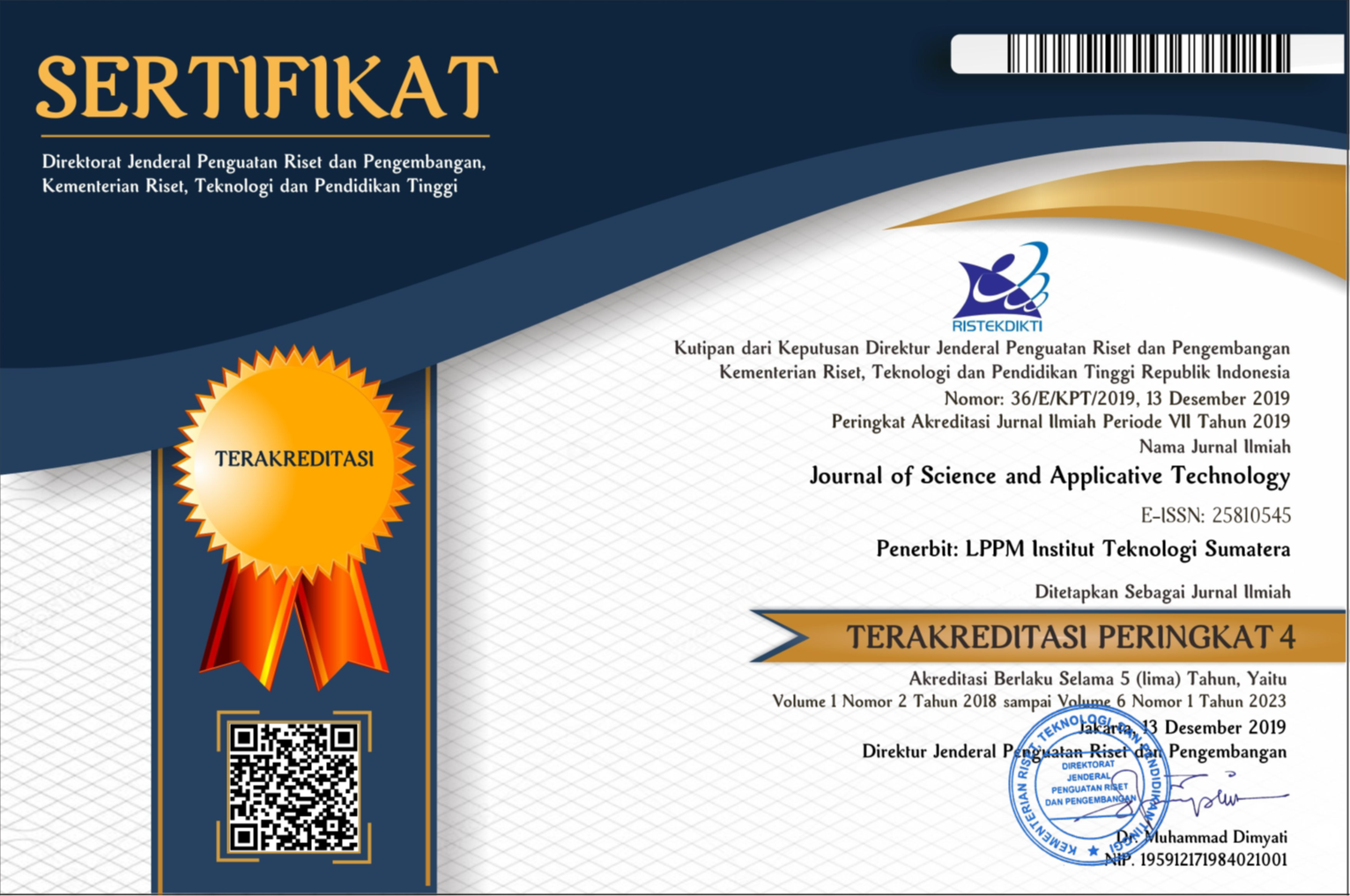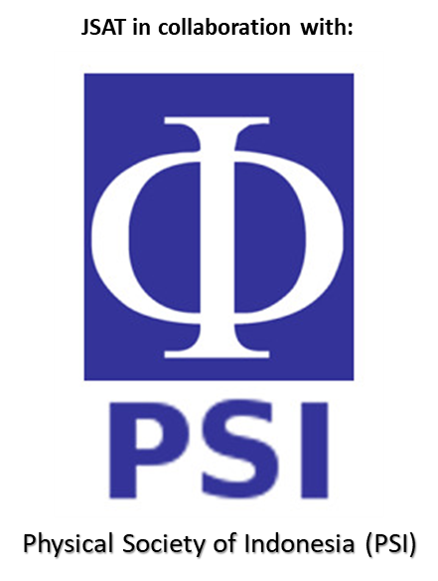The Effect of Processing Parameters on the Properties of Fish Gelatin Hydrolysate Nanoparticle
Abstract
Fish gelatin hydrolysate is a well- known fish by-product that is high in protein content. It is produced from by-product waste from the fish processing industry, which includes fish skin, head, and bones. Gelatin hydrolysates have recently received much attention due to its high protein content and bioactivity, which includes antioxidant, antimicrobial and antihypertensive activities. The transformation of gelatin hydrolysate into nanoparticles is believed to increase its economic value. Furthermore, reduction into nano-size increases the absorption characteristic of this material. Here, fish gelatin hydrolysate nanoparticles are prepared for the first time using desolvation method. The effects of concentration of gelatin hydrolysate, pH of solution, and acetone concentration on nanoparticle size are determined. The prepared gelatin hydrolysate nanoparticles were found to have spherical shape with sizes varying from 300-400 nm with a mean size of 408 ± 11.4 nm, zeta potential of -16.4 ± 1.2 mV and PDI 0.203 ± 0.07. This study showed that concentration of gelatin hydrolysate, pH and concentration of solvent have significant effects on nanoparticle size. The gelatin hydrolysate nanoparticles can be applied in the pharmaceutical industry for the encapsulation of drugs to facilitate delivery to target sites.
Downloads
References
[2] E. Dekkers, S. Raghavan, H. G. Kristinsson, and M. R. Marshall, “Oxidative stability of mahi mahi red muscle dipped in tilapia protein hydrolysates,†Food Chemistry, vol. 124, no. 2, pp. 640–645, 2011.
[3] A. E. Ghaly, V. V Ramakrishnan, M. S. Brooks, S. M. Budge, and D. Dave, “Fish Processing Wastes as a Potential Source of Proteins,†Amino Acids and Oils: A Critical Review, J. Microb. Biochem. Technol, vol. 5, no. 4, pp. 107–129, 2013.
[4] A. O. Elzoghby, “Gelatin-based nanoparticles as drug and gene delivery systems: Reviewing three decades of research,†Journal of Controlled Release, vol. 172, no. 3, pp. 1075–1091, 2013.
[5] L. Kasankala, Y. Xue, W. Yao, S. Hong, and Q. He, “Optimization of gelatine extraction from grass carp (Catenopharyngodon idella) fish skin by response surface methodology,†Bioresource Technology, vol. 98, pp. 3338–43, 2007.
[6] J.-I. Yang, W.-S. Liang, C.-J. Chow, and K. J. Siebert, “Process for the production of tilapia retorted skin gelatin hydrolysates with optimized antioxidative properties,†Process Biochemistry journal, vol. 44, pp. 1152–1157, 2009.
[7] S.-K. Kim, Y.-T. Kim, H.-G. Byun, K.-S. Nam, D.-S. Joo, and F. Shahidi, “Isolation and characterization of antioxidative peptides from gelatin hydrolysate of Alaska pollack skin,†Journal of agricultural and food chemistry, vol. 49, no. 4, pp. 1984–1989, 2001.
[8] S. Choonpicharn, S. Jaturasitha, N. Rakariyatham, N. Suree, and H. Niamsup, “Antioxidant and antihypertensive activity of gelatin hydrolysate from Nile tilapia skin,†Journal of Food Science and Technology, vol. 52, no. 5, pp. 3134–3139, 2015.
[9] R. Nurdiani, T. Vasiljevic, T. Yeager, T. K. Singh, and O. N. Donkor, “Bioactive peptides with radical scavenging and cancer cell cytotoxic activities derived from Flathead (Platycephalus fuscus) by-products,†European Food Research and Technology, vol. 243, no. 4, pp. 627–637, 2017.
[10] A. O. Elzoghby, W. M. Samy, and N. A. Elgindy, “Protein-based nanocarriers as promising drug and gene delivery systems,†Journal of Controlled Release, vol. 161, pp. 38–49, 2012.
[11] S. Kirar, N. S. Thakur, J. K. Laha, J. Bhaumik, and U. C. Banerjee, “Development of Gelatin Nanoparticle-Based Biodegradable Phototheranostic Agents: Advanced System to Treat Infectious Diseases,†ACS Biomaterials Science and Engineering, vol. 4, no. 2, pp. 473–482, 2018.
[12] E. J. Lee and K.-H. Lim, “Hardly water-soluble drug-loaded gelatin nanoparticles sustaining a slow release: preparation by novel single-step O/W/O emulsion accompanying solvent diffusion,†Bioprocess and Biosystems Engineering, vol. 40, no. 11, pp. 1701–1712, 2017.
[13] N. M. Meghani, H. H. Amin, C. Park, J. B. Park, J. H. Cui, Q. R. Cao, and B. J. Lee, “Design and evaluation of clickable gelatin-oleic nanoparticles using fattigation-platform for cancer therapy,†International Journal of Pharmaceutics, vol. 545, no. 1–2, pp. 101–112, 2018.
[14] S. Azarmi, Y. Huang, H. Chen, S. Azarmia, Y. Huang, H. Chend, M. Steve, D. Abramse, W. Road, R. Löbenberga, S. Azarmi, Y. Huang, and H. Chen, “Optimization of a two-step desolvation method for preparing gelatin nanoparticles and cell uptake studies in 143B osteosarcoma cancer cells,†Journal of Pharmaceutical Sciences, vol. 9, no. 1, pp. 124–132, 2006.
[15] C. Weber, C. Coester, J. Kreuter, and K. Langer, “Desolvation process and surface characterisation of protein nanoparticles,†International Journal of Pharmaceutics, vol. 194, pp. 91–102, 2000.
[16] X. Zhai, “Gelatin nanoparticles & nanocrystals for dermal delivery,†Freie Universität Berlin, 2013.
[17] A. T. Stevenson, D. J. Jankus, M. A. Tarshis, and A. R. Whittington, “The correlation between gelatin macroscale differences and nanoparticle properties: Providing insight into biopolymer variability,†Nanoscale, vol. 10, no. 21, pp. 10094–10108, 2018.
[18] S. A. Khan and M. Schneider, “Stabilization of gelatin nanoparticles without crosslinking,†Macromolecular Bioscience, vol. 14, no. 11, pp. 1627–1638, 2014.
[19] V. Viswanathan, H. Mehta, R. Pharande, A. Bannalikar, P. Gupta, U. Gupta, and A. Mukne, “Mannosylated gelatin nanoparticles of licorice for use in tuberculosis: Formulation, in vitro evaluation, in vitro cell uptake, in vivo pharmacokinetics and in vivo anti-tubercular efficacy,†Journal of Drug Delivery Science and Technology, vol. 45, no. January, pp. 255–263, 2018.
[20] H. Nejat, M. Rabiee, R. Varshochian, M. Tahriri, H. E. Jazayeri, J. Rajadas, H. Ye, Z. Cui, and L. Tayebi, “Preparation and characterization of cardamom extract-loaded gelatin nanoparticles as effective targeted drug delivery system to treat glioblastoma,†Reactive and Functional Polymers, vol. 120, no. June, pp. 46–56, 2017.
[21] M. Chalamaiah, B. Dinesh Kumar, R. Hemalatha, and T. Jyothirmayi, “Fish protein hydrolysates: Proximate composition, amino acid composition, antioxidant activities and applications: A review,†Food Chemistry, vol. 135, no. 4, pp. 3020–3038, 2012.
[22] S. M. Ahsan and C. M. Rao, “Structural studies on aqueous gelatin solutions: Implications in designing a thermo-responsive nanoparticulate formulation,†International Journal of Biological Macromolecules, vol. 95, pp. 1126–1134, 2017.
[23] M. Abdollahi, M. Rezaei, A. Jafarpour, and I. Undeland, “Sequential extraction of gel-forming proteins, collagen and collagen hydrolysate from gutted silver carp (Hypophthalmichthys molitrix), a biorefinery approach,†Food Chemistry, vol. 242, no. September 2017, pp. 568–578, 2018.
[24] S. M. Ahsan and C. M. Rao, “The role of surface charge in the desolvation process of gelatin : implications in nanoparticle synthesis and modulation of drug release,†International Journal of Nanomedicine, vol. 12, pp. 795–808, 2017.
[25] S. R. Youngren-Ortiz, D. B. Hill, P. R. Hoffmann, K. R. Morris, E. G. Barrett, M. G. Forest, and M. B. Chougule, “Development of Optimized, Inhalable, Gemcitabine-Loaded Gelatin Nanocarriers for Lung Cancer,†Journal of Aerosol Medicine and Pulmonary Drug Delivery, vol. 30, no. 0, p. jamp.2015.1286, 2017.
[26] S. Patra, P. Basak, and D. N. Tibarewala, “Synthesis of gelatin nano/submicron particles by binary nonsolvent aided coacervation (BNAC) method,†Materials Science and Engineering C, vol. 59, no. OCTOBER, pp. 310–318, 2016.
[27] D. Subara, I. Jaswir, M. Fahmi, R. Alkhatib, and I. A. Noorbatcha, “Synthesis of fish gelatin nanoparticles and their application for the drug delivery based on response surface methodology,†Advances in Natural Sciences: Nanoscience and Nanotechnology, vol. 9, pp. 1–11, 2018.
[28] A. Saxena, K. Sachin, H. B. B. Bohidar, and A. K. A. K. Verma, “Effect of molecular weight heterogeneity on drug encapsulation efficiency of gelatin nano-particles,†Colloids and Surfaces B: Biointerfaces, vol. 45, no. 1, pp. 42–48, 2005.
[29] B. Gaihre, M. S. Khil, D. R. Lee, and H. Y. Kim, “Gelatin-coated magnetic iron oxide nanoparticles as carrier system: Drug loading and in vitro drug release study,†International Journal of Pharmaceutics, no. 365, pp. 180–189, 2009.
Copyright (c) 2021 Journal of Science and Applicative Technology

This work is licensed under a Creative Commons Attribution-NonCommercial 4.0 International License.
All the content on Journal of Science and Applicative Technology (JSAT) may be used under the terms of the Creative Commons Attribution-NonCommercial 4.0 International License.
You are free to:
- Share - copy and redistribute the material in any medium or format
- Adapt - remix, transform, and build upon the material
Under the following terms:
- Attribution - You must give appropriate credit, provide a link to the license, and indicate if changes were made. You may do so in any reasonable manner, but not in any way that suggests the licensor endorses you or your use.
- NonCommercial - You may not use the material for commercial purposes.
- No additional restrictions - You may not apply legal terms or technological measures that legally restrict others from doing anything the license permits.





















